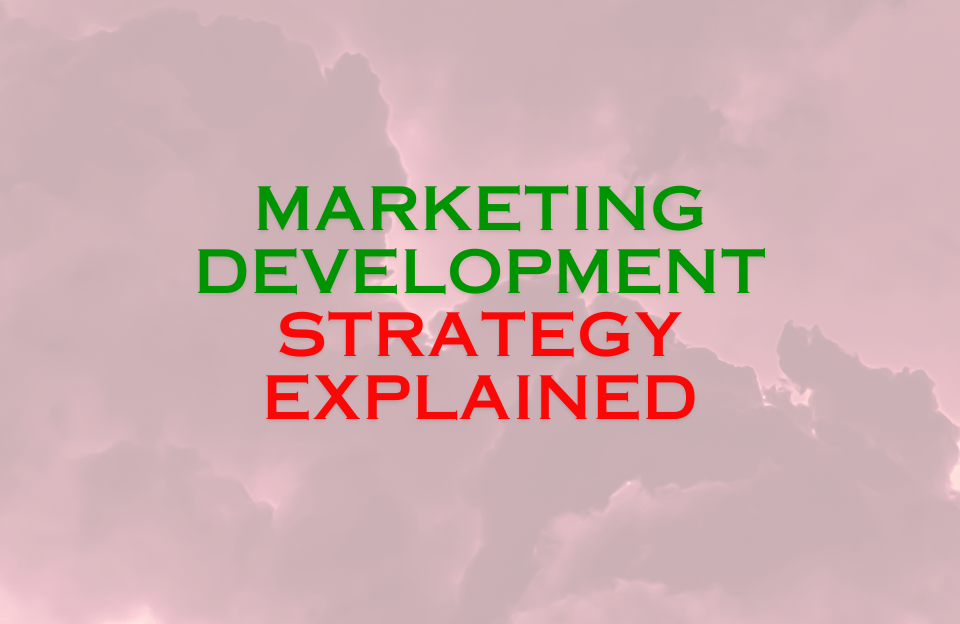Introduction
When growth in your current market starts to plateau, expanding into new markets can unlock fresh opportunities. That’s where the Market Development strategy comes in. As one of the four strategic directions in the Ansoff Matrix, Market Development focuses on introducing existing products to new markets — whether that means new geographies, new customer segments, or new distribution channels.
It’s a calculated way to scale your business by extending reach rather than reinventing the product.
What Is Market Development?
Market Development involves taking a product that already exists and finding new audiences for it. Rather than changing the product itself, the strategy revolves around rethinking who the product serves and how it’s delivered.
This could involve:
- Expanding into a different country or region
- Targeting a new demographic (age group, income level, lifestyle, etc.)
- Shifting from B2C to B2B (or vice versa)
- Using new distribution methods (e.g., e-commerce, partnerships)
Why Choose Market Development?
Market Development is a strategic fit when:
- Your current market is saturated or growing slowly
- You have a proven product with solid market traction
- You seek revenue growth without major R&D investment
- Your product is easily adaptable to other audiences or regions
It’s often a lower-risk alternative to full diversification, since the product is already validated.
Key Goals of Market Development
- Reach new audiences: Tap into customer groups that haven’t been exposed to your product before.
- Increase sales volume: Drive revenue growth without needing to redesign or reengineer your core offering.
- Expand brand recognition: Establish your company in new geographies or sectors to build long-term positioning.
Real-World Examples
- Netflix: Expanding from the U.S. into Europe, Latin America, and Asia with the same streaming platform.
- Nike: Targeting new sports audiences by sponsoring local teams in developing markets.
- Uber: Moving from urban ride-sharing in the U.S. to launching in India, Africa, and Eastern Europe with localized strategies.
- Apple: Opening physical retail stores in emerging markets where e-commerce is less dominant.
- Zoom: Initially used for corporate meetings, later promoted to educators, churches, and event organizers during the pandemic.
Best Suited For…
The Market Development strategy works best for companies that:
- Have a scalable product or service
- Possess the logistical and financial capacity to enter new territories
- Understand how to adapt messaging to diverse audiences
- Are willing to manage expansion-related risks
Industries where this strategy thrives:
- Consumer technology
- Food and beverage
- SaaS platforms
- Retail and fashion
- Educational products and tools
Common Risks and Challenges
- Market misfit: Assumptions about new markets may not hold up.
- Cultural and language barriers
- Regulatory and compliance hurdles
- Increased operational costs
- Brand dilution if poorly executed
To mitigate risk, thorough market research and local partnerships are essential.
Strategic Tips for Effective Market Development
- ✅ Conduct deep market research before expansion
- ✅ Localize branding and messaging to fit cultural norms
- ✅ Start with pilot programs or soft launches
- ✅ Leverage existing customer insights to inform new positioning
- ✅ Use scalable distribution models for cost-effective reach
Conclusion
Market Development offers a powerful growth path for companies that want to reach new audiences with proven products. By identifying untapped markets and strategically expanding into them, you can increase revenue, boost brand awareness, and future-proof your business — all without changing the core of what you offer.
For companies with scalability and the resources to manage expansion risks, Market Development is a smart, forward-thinking move.




